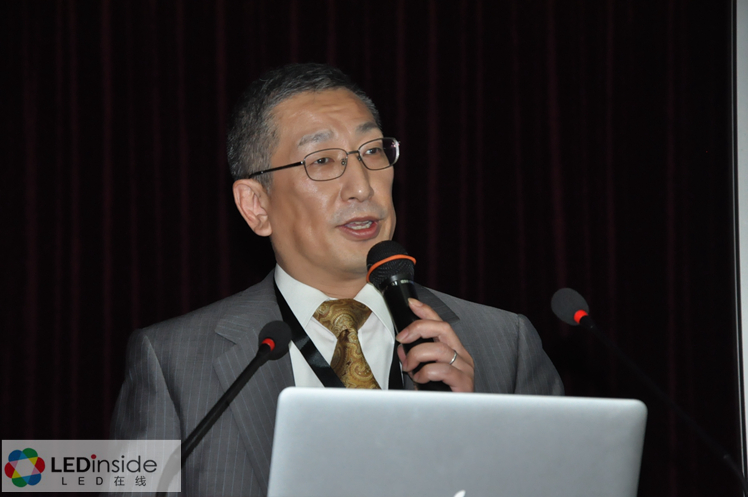The industry’s new round of global LED patent competitions will bring new challenges to the industry, said Ryoichi Tohmon, Director of Intellectual Property Project of Global Marketing and Sales Department at Toyoda Gosei during a talk at LEDforum Guangzhou 2014 in Guangzhou, China on June 11, 2014.
“Some patents are nearing expiration date, or will expire in the next few years, while others have many loopholes,” said Tohmon. “Accompanying the global patent development trends and growing number of patent lawsuits, in the end technology or R&D will still be the solution to patent issues. For instance basic white LED YAG patents will expire by 2017, which will no doubt bring a new round of opportunities and challenges in general patent competition.”
 |
|
Ryoichi Tohmon, Director of Intellectual Property Project of Global Marketing and Sales Department at Toyoda Gosei. (LEDinside) |
Currently, most basic LED patents are controlled by Philips, Nichia, Osram, Toyoda Gosei, and Cree. Through patent licensing, these companies have formed a protective wall enabling them to control the industry supply chain. Manufacturers outside of the patent barrier face the challenges of lawsuit threats and patent royalties.
The five manufacturers have a common characteristic in their patent strategies, noted Tohman. For instance, Nichia is inclined to protect patents through lawsuits, but rarely license its patents to other manufacturers. Most of the company’s lawsuits have been focused on LED chips and white LED patents, which use particular or same family patents. Osram and Cree are also lean towards filing patent infringement lawsuits, but are willing to sign patent license agreements with other manufacturers. Philips Lumileds has acquired letters patent, but has never filed a blue LED lawsuit. The company has only filed one patent lawsuit against Seoul Semiconductor (SSC) in March 2011.
Toyoda Gosei, though, is disposed towards licensing patents. The company along with Austrian manufacturer Tridonic, German manufacturers Leuchtstoffwerk Breitungen and Litec GbR have launched a white light technology patent utilizing blue LED and silicate phosphor. The patent is applicable in Austria, Europe, Japan, U.S., South Korea, Taiwan, China, Russia, Malaysia and Indonesian market. More than 30 LED manufacturers have received these patent license.
In addition, Tohmon noted in white LED manufacturing process, companies should pay attention to the different regional markets color temperature preferences. Manufactures should differentiate products accordingly, for example in North America and Europe office and factory lighting color temperature has to be at least 4,000K or a warmer white. Clients from these areas are more concerned about the environment atmosphere rather than electricity costs. This is opposite in Japan and Korea, where residential, office and factory lighting is in favor of cold white light. In Japan, most lighting used for home, office and factory are fluorescent tubes with 5,000K color temperature. Premium efficiency is an important factor in designing and developing these types of products.
Aside from market demands, during white light LED manufacturing process, chip and phosphor powder assembly will have huge impact on luminous flux, color temperature and Color Rendering Index (CRI). Toyoda Gosei has also launched silicate based phosphor powder TG white LED solution to meet market demands.
(Author: Jasmine Zhuang, Editor, LEDinside China, Translator: Judy Lin, Chief Editor, LEDinside)












